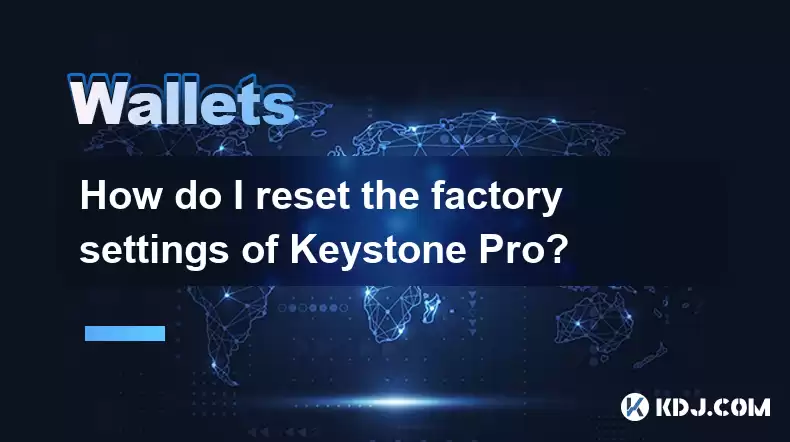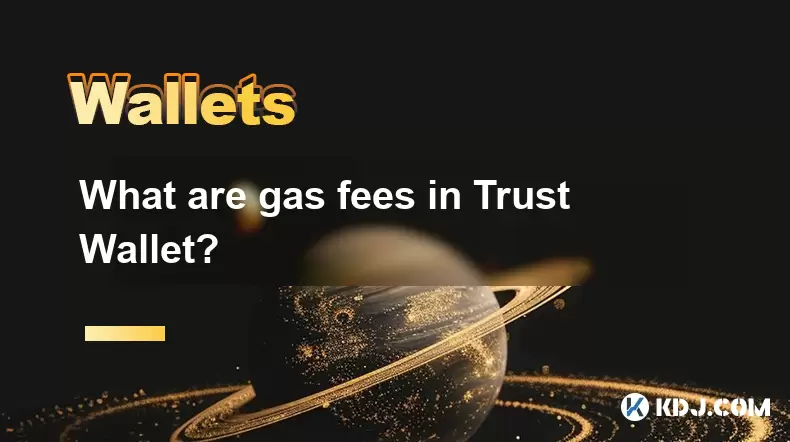-
 Bitcoin
Bitcoin $114400
1.32% -
 Ethereum
Ethereum $3499
2.20% -
 XRP
XRP $2.922
4.26% -
 Tether USDt
Tether USDt $0.0000
0.03% -
 BNB
BNB $752.6
1.53% -
 Solana
Solana $161.8
1.64% -
 USDC
USDC $0.9999
0.01% -
 TRON
TRON $0.3267
1.32% -
 Dogecoin
Dogecoin $0.1991
3.02% -
 Cardano
Cardano $0.7251
3.29% -
 Hyperliquid
Hyperliquid $38.32
3.36% -
 Stellar
Stellar $0.3972
7.58% -
 Sui
Sui $3.437
2.74% -
 Chainlink
Chainlink $16.29
3.65% -
 Bitcoin Cash
Bitcoin Cash $545.3
3.70% -
 Hedera
Hedera $0.2482
7.49% -
 Ethena USDe
Ethena USDe $1.001
0.03% -
 Avalanche
Avalanche $21.40
2.02% -
 Toncoin
Toncoin $3.579
1.56% -
 Litecoin
Litecoin $109.3
2.20% -
 UNUS SED LEO
UNUS SED LEO $8.951
-0.18% -
 Shiba Inu
Shiba Inu $0.00001220
2.75% -
 Polkadot
Polkadot $3.613
2.99% -
 Uniswap
Uniswap $9.173
3.78% -
 Monero
Monero $302.6
2.62% -
 Dai
Dai $0.0000
0.00% -
 Bitget Token
Bitget Token $4.320
1.52% -
 Pepe
Pepe $0.00001048
3.40% -
 Cronos
Cronos $0.1314
4.33% -
 Aave
Aave $259.4
3.54%
How do I reset the factory settings of Keystone Pro?
Reset your Keystone Pro to factory settings by navigating to Settings, selecting Factory Reset, confirming, and waiting for the process to complete.
Apr 06, 2025 at 12:15 pm

Introduction to Keystone Pro
The Keystone Pro is a highly secure hardware wallet designed for storing cryptocurrencies. It offers robust protection against various cyber threats, ensuring that your digital assets remain safe. One of the essential features of any hardware wallet is the ability to reset it to factory settings, which can be crucial for troubleshooting or preparing the device for a new user. In this article, we will guide you through the process of resetting the factory settings of your Keystone Pro.
Why Reset the Factory Settings?
Resetting the factory settings of your Keystone Pro can be necessary for several reasons. If you are experiencing technical issues, a factory reset can often resolve these problems by restoring the device to its original state. Additionally, if you plan to transfer the device to another user, a factory reset ensures that all your personal data and settings are completely wiped from the device. This step is crucial for maintaining the security and privacy of your cryptocurrency holdings.
Preparing for the Factory Reset
Before you proceed with resetting your Keystone Pro to factory settings, it is important to take a few preparatory steps. First, ensure that you have backed up all your important data, including your recovery seed phrase and any other critical information. This backup is essential because a factory reset will erase all data on the device. Additionally, make sure that your Keystone Pro is fully charged or connected to a power source to avoid any interruptions during the reset process.
Steps to Reset Keystone Pro to Factory Settings
To reset your Keystone Pro to factory settings, follow these detailed steps:
- Turn on your Keystone Pro: Press and hold the power button until the device turns on.
- Navigate to the Settings Menu: Use the navigation buttons to scroll to the "Settings" option and select it.
- Select Factory Reset: Within the Settings menu, find and select the "Factory Reset" option.
- Confirm the Reset: You will be prompted to confirm the factory reset. Select "Yes" or "Confirm" to proceed.
- Wait for the Reset to Complete: The device will begin the reset process. This may take a few minutes, so be patient and do not interrupt the process.
- Restart the Device: Once the reset is complete, the device will automatically restart. You will then be greeted with the initial setup screen, indicating that the factory reset was successful.
Verifying the Factory Reset
After the factory reset is complete, it is important to verify that the process was successful. To do this, you can check the following:
- Initial Setup Screen: If you see the initial setup screen, it is a clear indication that the device has been reset to its factory settings.
- No Previous Data: Ensure that none of your previous data, such as wallets or settings, are present on the device.
- Default Settings: Check that all settings are back to their default values, as they were when you first received the device.
Troubleshooting Common Issues
If you encounter any issues during the factory reset process, here are some troubleshooting steps you can take:
- Device Not Responding: If your Keystone Pro does not respond when you try to initiate the factory reset, try restarting the device and then attempt the reset again.
- Reset Process Stalls: If the reset process seems to stall or take longer than expected, ensure that the device is properly connected to a power source. If the issue persists, you may need to contact Keystone support for further assistance.
- Error Messages: If you receive any error messages during the reset process, take note of the specific error and consult the Keystone Pro user manual or support resources for guidance.
Frequently Asked Questions
Q: Will resetting my Keystone Pro to factory settings delete my cryptocurrency?
A: No, resetting your Keystone Pro to factory settings will not delete your cryptocurrency. However, it will erase all data on the device, including your wallets and settings. You must have your recovery seed phrase backed up to restore your wallets after the reset.
Q: Can I cancel the factory reset process once it has started?
A: No, once the factory reset process has started, it cannot be canceled. It is important to be certain before initiating the reset.
Q: How often should I reset my Keystone Pro to factory settings?
A: There is no need to reset your Keystone Pro to factory settings regularly. You should only do so if you are experiencing technical issues or if you are transferring the device to another user.
Q: What should I do if I forget my recovery seed phrase after a factory reset?
A: If you forget your recovery seed phrase after a factory reset, you will not be able to restore your wallets and access your cryptocurrency. It is crucial to keep your recovery seed phrase in a safe and secure location.
Disclaimer:info@kdj.com
The information provided is not trading advice. kdj.com does not assume any responsibility for any investments made based on the information provided in this article. Cryptocurrencies are highly volatile and it is highly recommended that you invest with caution after thorough research!
If you believe that the content used on this website infringes your copyright, please contact us immediately (info@kdj.com) and we will delete it promptly.
- Kaspa, HBAR, and Cold Wallet: A New York Minute on Crypto's Latest Moves
- 2025-08-04 09:11:54
- Ethereum Whale Watch: Selling Pressure and Price Volatility
- 2025-08-04 09:11:54
- XRP ETF Mania: Teucrium's Crypto Triumph and the Altcoin Frenzy
- 2025-08-04 09:30:13
- Crypto Wallet Scam: A $900K Loss & What You Need to Know
- 2025-08-04 09:35:13
- Dogecoin's Wild Ride: Elliott Wave, Stochastic RSI, and What's Next, Ya Know?
- 2025-08-04 09:40:12
- Shiba Inu (SHIB), Crypto Investments, and the Meme Coin Evolution: What's the Deal?
- 2025-08-04 09:45:17
Related knowledge

What is a watch-only wallet in Trust Wallet?
Aug 02,2025 at 03:36am
Understanding the Concept of a Watch-Only WalletA watch-only wallet in Trust Wallet allows users to monitor a cryptocurrency address without having ac...

How to fix a stuck pending transaction in Trust Wallet?
Aug 03,2025 at 06:14am
Understanding Why Transactions Get Stuck in Trust WalletWhen using Trust Wallet, users may occasionally encounter a pending transaction that appears t...

What is a multi-coin wallet in Trust Wallet?
Aug 03,2025 at 04:43am
Understanding Multi-Coin Wallets in Trust WalletA multi-coin wallet in Trust Wallet refers to a digital wallet that supports multiple cryptocurrencies...

How to switch between networks in Trust Wallet?
Aug 02,2025 at 12:36pm
Understanding Network Switching in Trust WalletSwitching between networks in Trust Wallet allows users to manage assets across different blockchains s...

How to check my full transaction history on Trust Wallet?
Aug 02,2025 at 09:24am
Understanding Transaction History in Trust WalletTrust Wallet is a widely used non-custodial cryptocurrency wallet that supports a broad range of bloc...

What are gas fees in Trust Wallet?
Aug 04,2025 at 06:14am
Understanding Gas Fees in Trust WalletGas fees in Trust Wallet refer to the transaction costs required to execute operations on a blockchain network. ...

What is a watch-only wallet in Trust Wallet?
Aug 02,2025 at 03:36am
Understanding the Concept of a Watch-Only WalletA watch-only wallet in Trust Wallet allows users to monitor a cryptocurrency address without having ac...

How to fix a stuck pending transaction in Trust Wallet?
Aug 03,2025 at 06:14am
Understanding Why Transactions Get Stuck in Trust WalletWhen using Trust Wallet, users may occasionally encounter a pending transaction that appears t...

What is a multi-coin wallet in Trust Wallet?
Aug 03,2025 at 04:43am
Understanding Multi-Coin Wallets in Trust WalletA multi-coin wallet in Trust Wallet refers to a digital wallet that supports multiple cryptocurrencies...

How to switch between networks in Trust Wallet?
Aug 02,2025 at 12:36pm
Understanding Network Switching in Trust WalletSwitching between networks in Trust Wallet allows users to manage assets across different blockchains s...

How to check my full transaction history on Trust Wallet?
Aug 02,2025 at 09:24am
Understanding Transaction History in Trust WalletTrust Wallet is a widely used non-custodial cryptocurrency wallet that supports a broad range of bloc...

What are gas fees in Trust Wallet?
Aug 04,2025 at 06:14am
Understanding Gas Fees in Trust WalletGas fees in Trust Wallet refer to the transaction costs required to execute operations on a blockchain network. ...
See all articles

























































































